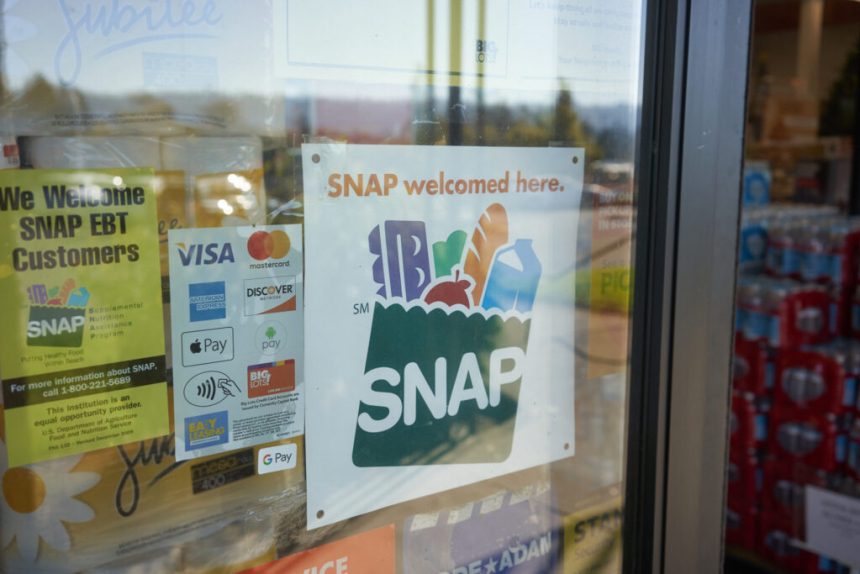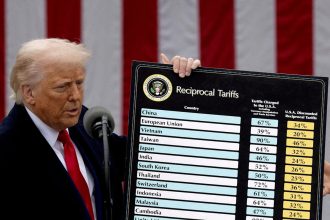A “SNAP welcomed here” sign is seen at the entrance to a Big Lots store in Portland, Oregon. (Getty Images)
The U.S. Department of Agriculture has informed states that there are insufficient funds to pay for SNAP benefits in November — unless Congress passes a spending bill by the end of the month.
SNAP benefits, also referred to as food stamps, help low-income families buy food. About 440,000 Minnesotans rely on SNAP. Most of them are children, seniors and people with disabilities.
The Minnesota Department of Children, Youth, and Families instructed counties to stop approving new SNAP applications, effective Wednesday. That means families in need won’t be able to get approved for benefits until the shutdown ends.
“Pausing even a single day of applications for SNAP benefits could delay approval for hungry kids and families who don’t have a day to spare,” Senate Majority Leader Erin Murphy, DFL-St. Paul, said in a press release.
Food shelves are worried about their ability to feed hungry families if benefits expire. Second Harvest Heartland, the state’s largest food bank, estimates that SNAP can provide nine times the amount of food as the food bank. Even small cuts to SNAP — let alone a complete expiration of funding — would have an outsized impact on the state’s emergency food system.
The temporary lapse in funding comes amid other major changes to SNAP. A GOP mega-law signed into law by President Donald Trump on July 4 will cut funding for SNAP by around 20%, or $187 billion over 10 years, in order to offset the cost of extending the tax breaks Trump spearheaded in his first term, in addition to some new ones.
The SNAP cuts come from expanded work requirements for parents of teenagers and people between the ages of 55 and 64; changes to how utility and internet bills are counted against an applicant’s income when determining benefits; and cost shifts to the states.
The law also eliminated the SNAP-Ed program, which educated SNAP recipients on healthy eating and how to lead a physically active lifestyle. Those cuts resulted in 60 layoffs at the University of Minnesota.
The new work requirements for SNAP are scheduled to take effect on Nov. 1.









